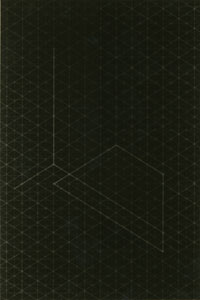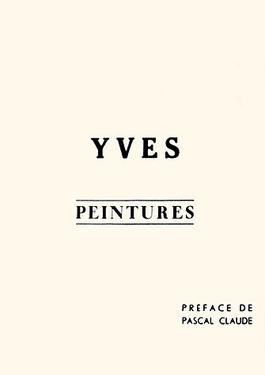Michael Max Asher was a conceptual artist, described by The New York Times as "among the patron saints of the Conceptual Art phylum known as Institutional Critique, an often esoteric dissection of the assumptions that govern how we perceive art." Rather than designing new art objects, Asher typically altered the existing environment, by repositioning or removing artworks, walls, facades, etc.

Installation art is an artistic genre of three-dimensional works that are often site-specific and designed to transform the perception of a space. Generally, the term is applied to interior spaces, whereas exterior interventions are often called public art, land art or art intervention; however, the boundaries between these terms overlap.

Mark Wallinger is an English artist. Having previously been nominated for the Turner Prize in 1995, he won in 2007 for his installation State Britain. His work Ecce Homo (1999–2000) was the first piece to occupy the empty fourth plinth in Trafalgar Square. He represented Britain at the Venice Biennale in 2001. Labyrinth (2013), a permanent commission for Art on the Underground, was created to celebrate 150 years of the London Underground. In 2018, the permanent work Writ in Water was realized for the National Trust to celebrate the Magna Carta at Runnymede.

Joseph Heinrich Beuys was a German artist, teacher, performance artist, and art theorist whose work reflected concepts of humanism, sociology, and, with Heinrich Böll, Johannes Stüttgen, Caroline Tisdall, Robert McDowell, and Enrico Wolleb, created the Free International University for Creativity & Interdisciplinary Research (FIU). He previously in his talks and performances also formed The Party for Animals and The Organisation for Direct Democracy. He was a member of a Dadaist art movement Fluxus and singularly inspirational in developing of Performance Art, called Kunst Aktionen, alongside Wiener Aktionismus that Allan Kaprow and Carolee Schneemann termed Art Happenings. Today, internationally, the largest performance art group is BBeyond in Belfast, led by Alastair MacLennan who knew Beuys and like many adapts Beuys's ethos.

Monochromatic painting has played a significant role in modern and contemporary Western visual art, originating with the early 20th-century European avant-gardes. Artists have explored the non-representational potential of a single color, investigating shifts in value, diversity of texture, and formal nuances as a means of emotional expression, visual investigation into the inherent properties of painting, as well as a starting point for conceptual works. Ranging from geometric abstraction in a variety of mediums to non-representational gestural painting, monochromatic works continue to be an important influence in contemporary art.
Events from the year 1962 in art.

Marcel Broodthaers was a Belgian poet, filmmaker, and visual artist with a highly literate and often witty approach to creating art works. From 1943 to 1951 he was a member of a Communist party.

Piero Manzoni di Chiosca e Poggiolo, better known as Piero Manzoni was an Italian artist best known for his ironic approach to avant-garde art. Often compared to the work of Yves Klein, his own work anticipated, and directly influenced, the work of a generation of younger Italian artists brought together by the critic Germano Celant in the first Arte Povera exhibition held in Genoa, 1967. Manzoni is most famous for a series of artworks that call into question the nature of the art object, directly prefiguring Conceptual Art. His work eschews normal artist's materials, instead using everything from rabbit fur to human excrement in order to "tap mythological sources and to realize authentic and universal values".

Benjamin Heinz-Dieter Buchloh is a German art historian. Between 2005 and 2021 he was the Andrew W. Mellon Professor of Modern Art in the History of Art and Architecture department at Harvard University.

Blinky Palermo was a German abstract painter.

Thomas Schütte is a German contemporary artist. He sculpts, creates architectural designs, and draws. He lives and works in Düsseldorf.
In art, institutional critique is the systematic inquiry into the workings of art institutions, such as galleries and museums, and is most associated with the work of artists like Michael Asher, Marcel Broodthaers, Daniel Buren, Andrea Fraser, John Knight (artist), Adrian Piper, Fred Wilson, and Hans Haacke and the scholarship of Alexander Alberro, Benjamin H. D. Buchloh, Birgit Pelzer, and Anne Rorimer.

Colección Jumex is a private art collection owned by Eugenio López Alonso. It includes around 2,800 works by Damien Hirst, Andy Warhol, Gabriel Orozco, Cy Twombly, Jeff Koons, Marcel Duchamp, Andreas Gursky, Darren Almond, Tacita Dean, Olafur Eliasson, Martin Kippenberger, Carl Hopgood, Bruce Nauman, David Ostrowski, Francis Alÿs, Urs Fischer, Gego, Donald Judd, Ed Ruscha, Nancy Rubins, Richard Prince, Stefan Brüggemann, and Martin Creed.

Fred Sandback was an American minimalist conceptual-based sculptor known for his yarn sculptures, drawings, and prints. His estate is represented by David Zwirner.

Yves Peintures is an artist's book by the French artist Yves Klein, originally published in Madrid, on 18 November 1954. This publication was Klein's first public gesture as an artist, featuring pages of 'commercially printed papers' that were seemingly reproductions of paintings that, in fact, didn't exist. Using a practice started by Marcel Duchamp, this use of readymade objects to represent nothing but themselves has been referred to as an early example of Postmodernism, using a series of carefully executed strategies to undermine its own authority, and as a precursor to conceptual art. 'The simplicity of his readymades is at once sublime and mischievous.'
"The booklet asserts its character straightaway in the preface: a wordless text of unbroken horizontal lines with the same two paragraph indentations on each page.... a homogenous continuum with no real beginning, middle, or end, and no content - at least insofar as there are no descriptions, analyses, or personalized utterances. The colour plates are similarly presented as anonymous entities, each a flat spatial field of an uninflected hue: turquoise, brown, purple, green, pink, gray, yellow, ultramarine, mint, orange, or red. Here, too, there is no attempt to represent or symbolize anything....
The booklet thus offers an utterly pared down presentation. Unlike most art books, it provides no reverential prose about the artist or the art, and no embellishing descriptions meant to convey meaning or context. Instead the booklet itself is made into a work of art that shares the same spirit of nothingness exemplified by the monochrome paintings that it features." Sidra Stich
Marian Goodman is owner of the Marian Goodman Gallery, a contemporary art gallery opened in Manhattan, New York in 1977. Goodman has been called one of the most respected and influential gallerists of contemporary art in the world. She is known for introducing European artists like Gerhard Richter, Joseph Beuys, and Marcel Broodthaers to the United States and has represented a number of important artists including Steve McQueen, Thomas Struth, Pierre Huyghe, Thomas Schütte, Lothar Baumgarten, Tony Cragg, Richard Deacon, Tacita Dean, Christian Boltanski, Annette Messager, Chantal Akerman, Niele Toroni, Gabriel Orozco, Maurizio Cattelan, Giuseppe Penone, Giovanni Anselmo, Jeff Wall, Rineke Dijkstra, and William Kentridge. Marian Goodman gained prominence in the art world in the 1970s and 1980s, a time when few women worked in this sector.

Minimalism describes movements in various forms of art and design, especially Visual art and music, where the work is set out to expose the essence, essentials or identity of a subject through eliminating all non-essential forms, features or concepts. As a specific movement in the arts it is identified with developments in post–World War II Western Art, most strongly with American visual arts in the 1960s and early 1970s. Minimalism is often interpreted as a reaction to abstract expressionism and a bridge to postminimal art practices. Prominent artists associated with this movement include Ad Reinhardt, Nassos Daphnis, Tony Smith, Donald Judd, John McCracken, Agnes Martin, Dan Flavin, Robert Morris, Larry Bell, Anne Truitt, Yves Klein and Frank Stella. Artists themselves have sometimes reacted against the label due to the negative implication of the work being simplistic.
Briony Fer, FBA is a British art historian, critic, and curator; professor of history of art at University College London. She has written extensively on diverse topics of 20th century and contemporary art. She has written essays on numerous contemporary artists, such as Gabriel Orozco, Vija Celmins, Jean-Luc Moulène, Roni Horn, Ed Ruscha, and Rachel Whiteread. A focus of her research is on the art of American sculptor Eva Hesse, as when she wrote for the catalogue for the artist's 2002 retrospective curated by Elisabeth Sussman at San Francisco's Museum of Modern Art in 2002.
Ann Temkin is the Marie-Josée and Henry Kravis Chief Curator of Painting and Sculpture at The Museum of Modern Art (MoMA) in New York.












